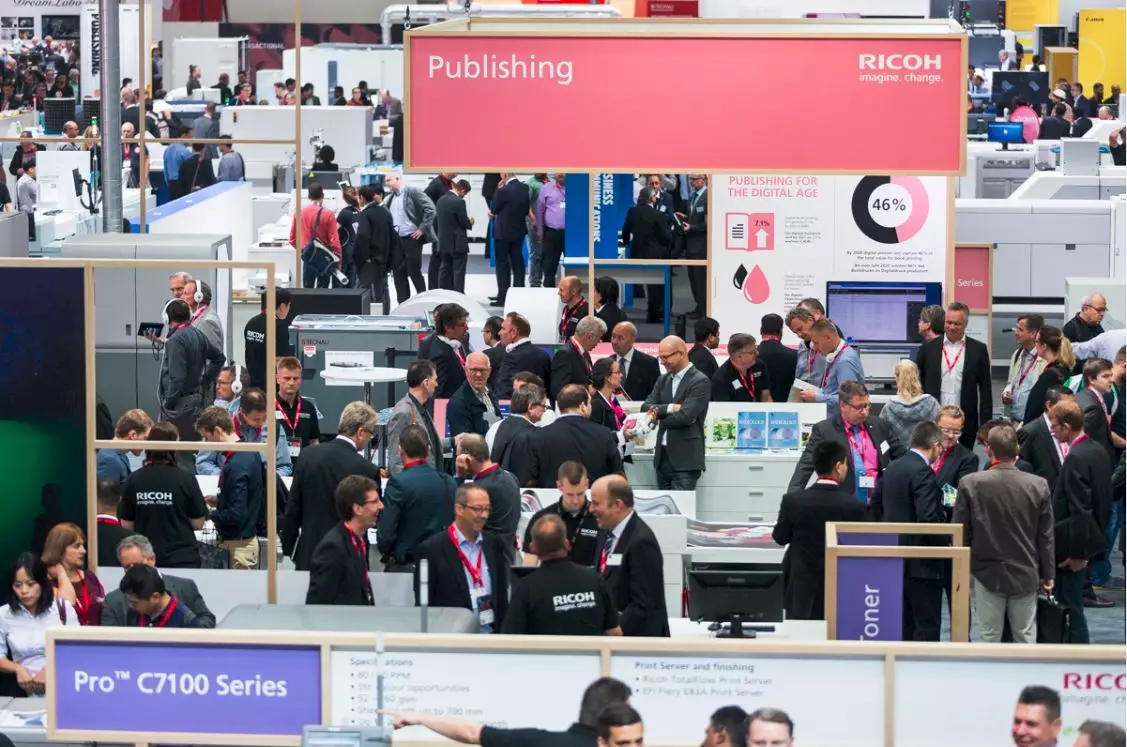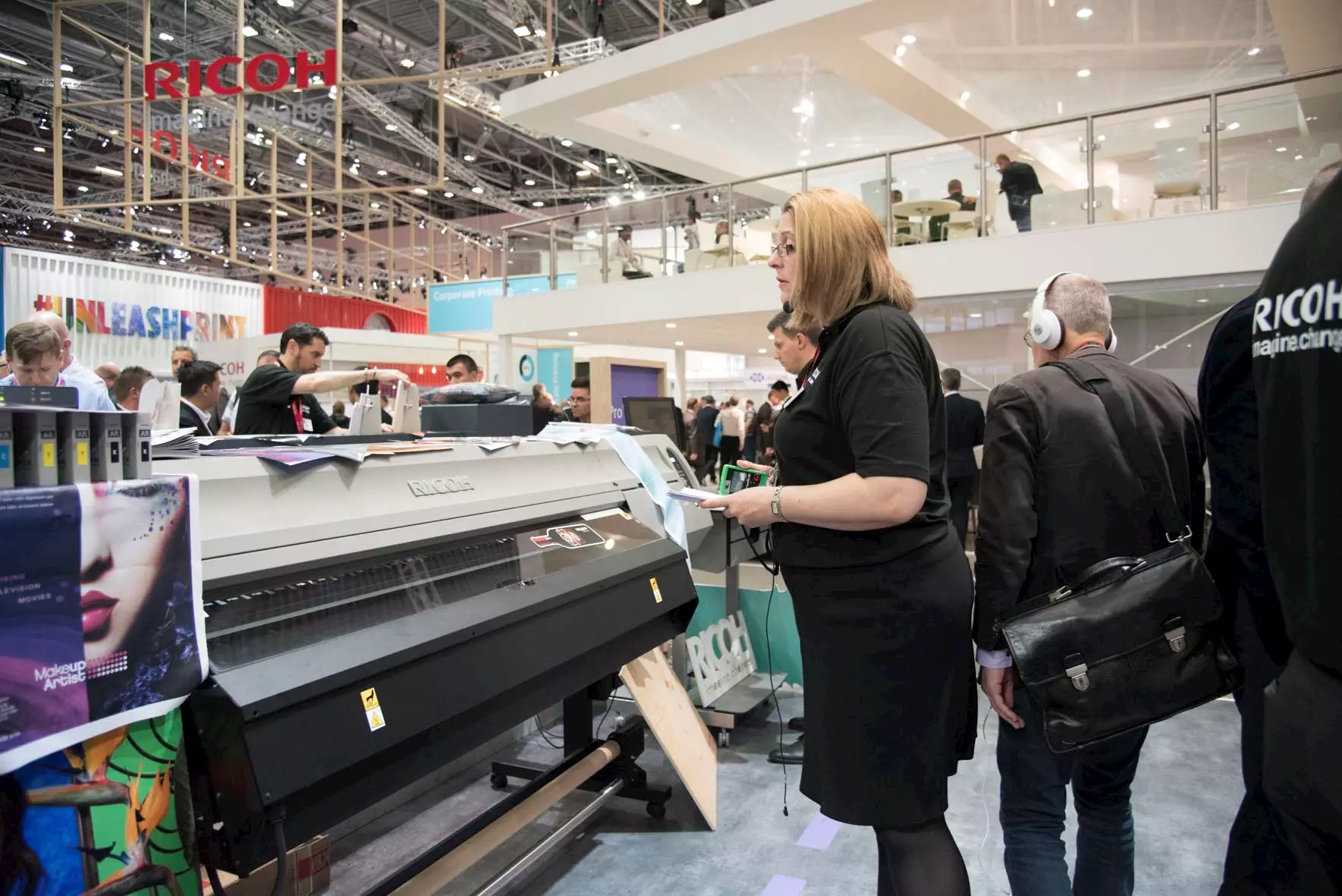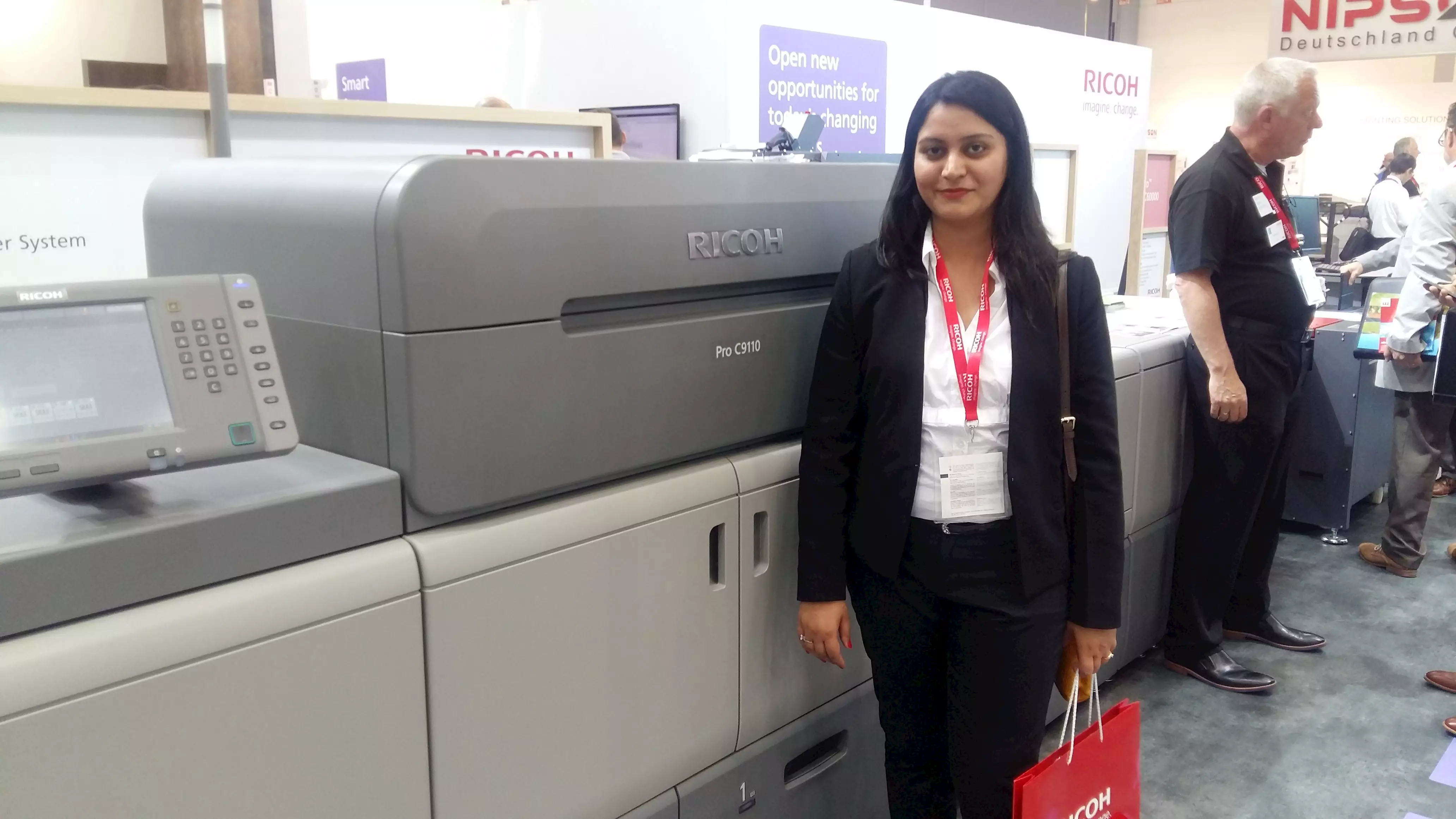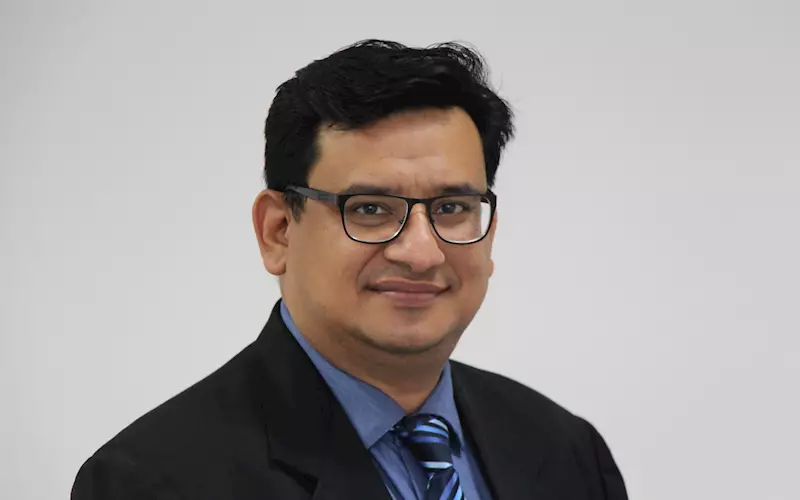Ricoh India: Time to join the dots - The Noel D'Cunha Sunday Column
From a high of 2008, Ricoh in India has seen its market share plummet over the years. Eight years later, Sambit Misra, the new chief operating officer at Ricoh hopes to reverse this trend with a rejig of strategy to mop up more market space. In a candid, free-wheeling conversation, Misra highlights the road ahead.
In this Sunday Column, Misra in a candid and free-wheeling conversation discusses how Ricoh plans to stay ahead in 2016.
09 Jul 2016 | By Noel D'Cunha
PrintWeek India: Let’s go straight to the liquid toner technology. With Drupa 2016, done and dusted how do you gauge the liquid toners technology?
Sambit Misra (SM): Worldwide they are available and they are selling. But, when you look at the Indian market space, it becomes a big challenge. The question that arises is: Is there the kind of volumes that would demand a faster machine?
The justification for investing in a multi-crore machine that can print three times faster than the mid-production machine comes only when you have the volumes on a daily basis or the customer is ready to pay a premium for the quality that you are delivering.
PWI: You think India would "always" remain a mid-production market?
SM: It will be machines in the 60ppm to 150ppm range. Some of the printer will keep on investing in high-end machines. Some of them will burn their fingers or get back their just dues till the time they are not able to provide a viable cost.
PWI: What is the Ricoh strategy for this year?
SM: My strategy is to grow the mid-production market. We have started getting into 120ppm to 130ppm market also. But that is less than 100 units in a whole year – all the three players – Konica Minolta, Canon and Xerox put together. Perhaps Xerox is out of it because the iGen is priced much higher than the kit from Ricoh or KM who sell and cater to that segment.
PWI: Why the sluggishness in 2015?
SM: Last year, we tried to sort out the things which were not doing well. This year the idea is to mop up more market space. We should move from an 11% market share to a 20% by the end of the year.
PWI: Still not the 2008 kind of numbers? Which was the best year?
SM: 2008 was the peak year, after which there’s been a decline. Getting back to 2008 numbers will not be easy. That’s because digital print volumes have not grown in the way it should have.

Ricoh stall at Drupa
PWI: Why so?
SM: The problem is that we don’t have a transactional market to support the regular market. Worldwide, colour print is growing primarily in the transactional space. Unfortunately, there’s a complete lack of understanding among printers on how to better the processes, and the resources which are needed to market transactional material.
PWI: Please elaborate.
SM: In India, our approach to database is lackadaisical. We don’t have data at the right places, hence the difficulty in accessing it. Also there is no method in capturing data. For example, nobody is capturing data on consumer behaviour, which could help create a better response rate. Until capture of data is not done in a scientific method, getting volumes in the transactional space will continue to be a challenge. That said, with banking systems getting better, a lot of CRM developments have been happening.
PWI: But the numbers are not adding up, is that a worry?
SM: This is the biggest challenge. Especially with the organisations like ours. We have a very large sales force which is working on the product sales, and there is a lot of competition. It’s tough, but the saving grace is the margins on aftersales. So if you remove your cost of services, your profitability goes down. Hence, getting good numbers will depend on how remote you can go. It is all very fine to say tier III and tier IV. But there is a cost to that kind of outreach. Therefore, at Ricoh, we are trying to install three to four machines in the same vicinity.
PWI: How do the consumable firms like TechNova and Huber manage?
SM: The best way is, to have dealers and channel partners. This gives you the billing location, plus global technology at a local cost and finally, a personal touch with the customer.
PWI: Coming back to digital print, most of the manufacturers have launched the 100ppm machine? Is this the right strategy?
SM: The problem is, everyone who enters the market, kills the volume for ten others in the area. Today those print companies which possessed bigger volumes in the past, are struggling. The challenge is: how do you increase the volumes of these print companies.
PWI: What is your strategy to counter this dip in volume?
SM: Our strategy is a bit, different. We are letting go a lot of print and moving into enterprise. We have invested in verticals like education, BFSI and healthcare. We have developed new applications which runs on our equipment for the enterprise customer. We have been successful with our Diacom print on an entry level product.
PWI: I see...
SM: I am convinced that it is time to initiate central reprographic technology (CRT). Most of the offices are getting bigger. In India, bigger offices have many devices without a CRT department. This is not the case in the overseas countries.
Elsewhere, CRT is a big market. Which is why, we have begun a CRT foray with the enterprise customers.
PWI: What about book-on-demand?
SM: The book-on-demand market has become price sensitive. As a result, there are no takers for digital book printing kit. In most cases the device is lying idle. Therefore, we are looking at the education segment, where the organisations are creating books for educational institutions and not necessarily government books. We are tapping the open school kind of business, where customised printing is happening.
PWI: So, you hand over the devices to the end customers?
SM: Yes, if the organisation is ready to buy, which the most companies have not.
PWI: You have a customer in Guntur.
SM: Yes, we have sold two machines to a company in Guntur which specialises in printing ration cards on a Tyvek material.
PWI: Interesting. So, the future is new technologies.
SM: If you look at the West, the market has evolved by leveraging new technologies. We have been promoting VDP, and we know that there would be mistakes, but with time one will learn to better it.
PWI: This requires operator training…
SM: On our part, we train the operators, but there’s a fear that those who are trained may be poached. On the other side, print companies hardly invest in sales personnel. Only those who have crossed the Rs 100-crore mark do. It is simple, if you hire trained manpower you are bound to improve your performance.
PWI: Many Indian printers are not fans of digital print: They say: “It has brought the value of print, which used to be a prosperous industry, rocketing down. The business has therefore become little more than a green-button-pressing exercise.” Your response.
SM: The challenge is: how do you prepare an offset printer to move into digital? The first hurdle is the re-sale value of the machine. We have to convince the printer that a machine will have a certain life period, and that there’s no machine that will go on forever. Ricoh sold a machine to Repro India. Even today, they are happy about the purchase.
PWI: At Drupa, Ricoh and EFI signed a sales partnership for Ricoh to sell EFI wide-format printers. The deal covers the H1625 LED roll/flatbed hybrid UV printer and the 2m-wide EFI Vutek HS2000 UV printer. A full circle for you as a champion of wide-format technology?
SM: Yes.
PWI: Speaking of EFI, what is the front-end platform that you are using with Ricoh?
SM: We are using a GW controller. Even if you don’t run it through the controller, a USB drive on the regular touch panel can enable taking prints. We can also configure it to a 600x9600dpi. Our installations in the photo printing space, particularly in the entry-segment, there’s no necessity of a RIP because these machines are already configured and fitted with a GW controller.
PWI: And where are you developing the controller?
SM: In Japan. The internal controller or the driver can use the full DPI strength of the engine. However, there are limitations in that we have not gone beyond 2,400dpi, where of course, the EFI Fiery offers many production capabilities and tools that empowers the press to do a lot more.
PWI: Which are the devices you are putting the GW controller on?
SM: The Ricoh Pro 5100 and Pro 7100. The file actually has to get spooled and fit into the system. It will basically take all the ten pages, spool them and put into the system and then will start printing it.
PWI: EFI refers to it super-fast Fiery front-end but we don’t see that being optimised by printers. Why?
SM: The Fiery has the ability to print at the rated speed of the printer, you RIP one page while you print the previous page concurrently, however the RIP is basically sold by the print OEMs as a default piece of hardware, more like a print server.
Most of the service engineers and pre-sales managers are not completely aware of the features available and how to use them to optimise printing operations. Hence the features are neither known to the customer nor used by them.
PWI: Tell us about the feasibility of the new 7100X and the fifth colour option – clear and white toner?
SM: We have installed about 25 plus machines. We believe that it can produce white that is better than its more expensive rival in the market.
The case with white ink is that one needs to employ a thought process in creating an output using clear and white toners. The more you experiment with white the more are the chances for a better output. With the clear ink, we offer the printers with the ability to produce applications in the security space too.
Ricoh India @Drupa 2016
Like they have done before, in every single edition of Drupa, Sambit Misra, COO at Ricoh India, says, the Ricoh stand this year was designed to – open new worlds – for printing firms looking for maximised productivity, increased profitability and additional markets.
The spotlight was on the Ricoh Pro VC60000 digital production press. This fully configured digital press is capable of handling a variety of media in roll-to-roll as well as roll-to-sheet modes. “Ricoh Pro VC60000 is featured with inline under-coating and over-coating systems, which any CF machine in the market till date cannot do this functionality,” explains Misra, adding that one of the major applications of this production press is a short-run magazine production, with a run length of around 500-1000 copies. At the same time, this press is designed to print in multiple languages.

In the cut-sheet category, Ricoh showed the Pro C9110 and Pro C7100x with its fifth toner station. In the large-format category, where Ricoh has recently made its presence, showcased the company’s newly developed aqueous resin (AR) latex inks for its popular Pro L4100 series signage graphic printer.

Another attraction was the increased finishing capabilities with the Watkiss PowerSquare 224 booklet maker running inline with the Ricoh Pro C9100 series, Pro C7100x series and Pro 8100 series digital presses.
The portfolio also included Ricoh's TotalFlow Cloud Suite, a hosted portfolio of cloud-based services.
A big launch this year in India will be the upgraded Ricoh Pro L4100 large-format printer, equipped with aqueous resin (AR) latex inks. These printers will also be using the Piezo printheads and seven colours including orange, green and white.
| Talking head: Priya Dwivedi, assistant marketing manager - PP at Ricoh India |
|
Drupa was a good outing for Ricoh India. The Indian customers were enthused with the bouquet of our products, and showed great interest in the white and neon colour printing capabilities. Customers were also keen to opt for our post-print solutions along with the engines. The aim with the post-print solutions is to provide end-to-end products rather than just print engines.  We have signed multiple deals, but these will be closed after the configurations are finalised. |














 See All
See All